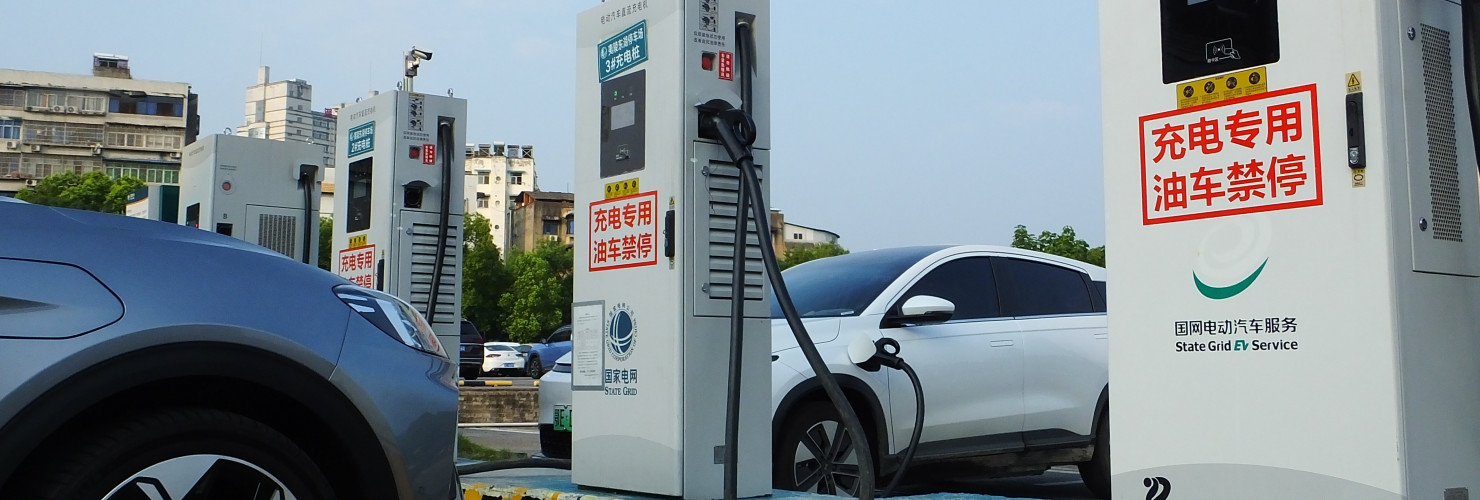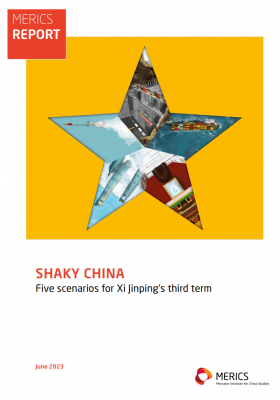
EV infrastructure roll out + Manufacturing sector + Talent shortages
In this issue of MERICS China Industries, we cover the following topics:
- State Council supercharges EV infrastructure roll out
-
Shanghai tracks a course to reach even greater manufacturing heights
-
New action plan unlikely to resolve China’s shortage of skilled talent
-
Ministries for finance and industry push efficient digitalization of SMEs
-
Beijing wants more funding for its tech innovators
At a glance: The State Council released guidelines to promote the high-quality development of China’s electrical vehicle (EV) charging infrastructure. Policymakers intend to improve the roll out of charging infrastructure to support China’s leading EV sector and strengthen consumption. Goals for 2030 include:
- Construct a high-quality nationwide charging infrastructure system with extensive coverage in and between cities as well as rural areas
- Increase the number of parking spaces with charging piles in medium and large cities so that they exceed the number of registered EVs in each locality
- Support the internationalization of Chinese charging standards
- Deploy new technologies such as battery swapping as well as fast and wireless charging
MERICS comment: China is today the world’s largest EV market, in large part due to subsidies for EVs – which have just been extended – and its expansive network of charging infrastructure. In 2022, China installed nearly 650,000 public chargers, 70 percent of global installations. 975,000 more will be installed in 2023, forecasts the China Charging Infrastructure Promotion Alliance. Chinese policymakers favor investment-driven growth to stimulate the economy. Rather than splurging on roads and bridges, investing in charging infrastructure could cement China’s EV lead and boost EV consumption, especially in rural areas where charging infrastructure is still lagging.
The plan is light on details but signals high-level support for China’s charging and EV industry. Provincial and local governments will be tasked with the actual implementation. They have long subsidized the installation and operation of charging piles, which is an often unattractive, low-margin business.
In the short-term, foreign suppliers to Chinese charging equipment makers like Infineon will likely benefit from China’s ongoing infrastructure push. Despite fierce competition from Chinese rivals, the overall market growth will enable foreign companies to expand. In the long-term, leveraging the scale of China’s charging market and soft incentives to “buy Chinese,” Chinese charging equipment makers and their suppliers will make forays into global markets. For instance, charging equipment maker Shenzhen Sinexcel Electric has obtained European AC standard certification and has become a supplier to BP.
Article: Guiding Opinions on Further Building a High-quality Charging Infrastructure System (国务院办公厅关于进一步构建高质量充电基础设施体系的指导意见) (Link)
Issuing body: State Council
Date: June 20, 2023
At a glance: The Shanghai People’s Government issued a plan to advance its manufacturing industry, seeking to build on its existing position as one of the nation’s key industrial hubs. By 2025, officials aim to:
- Increase the industrial added-value output from CNY 1.15 trillion to CNY 1.3 trillion
- Build world-class industrial clusters in integrated circuits, biomedicine and AI and consolidate advantages in industries such as life sciences, automotive, advanced materials, civil aviation and high-end ships
- Improve the resilience and security level of the industrial supply chains in sectors such as automotive, semiconductors, chemicals; strengthen the chain protection and stability of key materials and components
- Nurture technology-based enterprises, including 10,000 “Specialized SMEs” and 1,000 “Little Giants”


